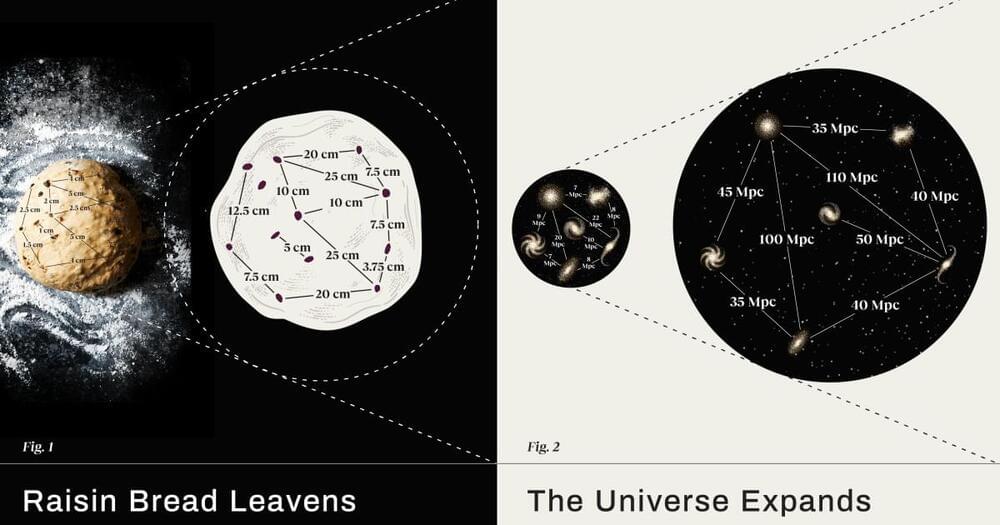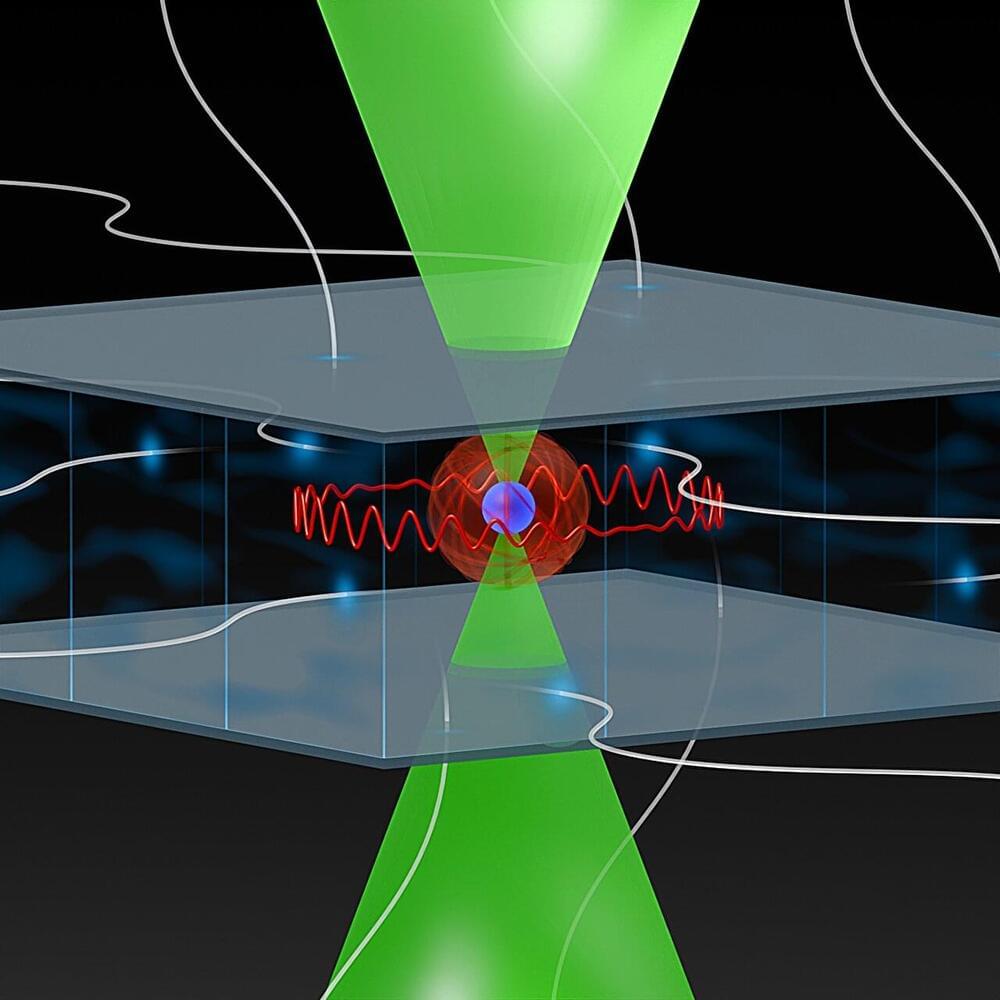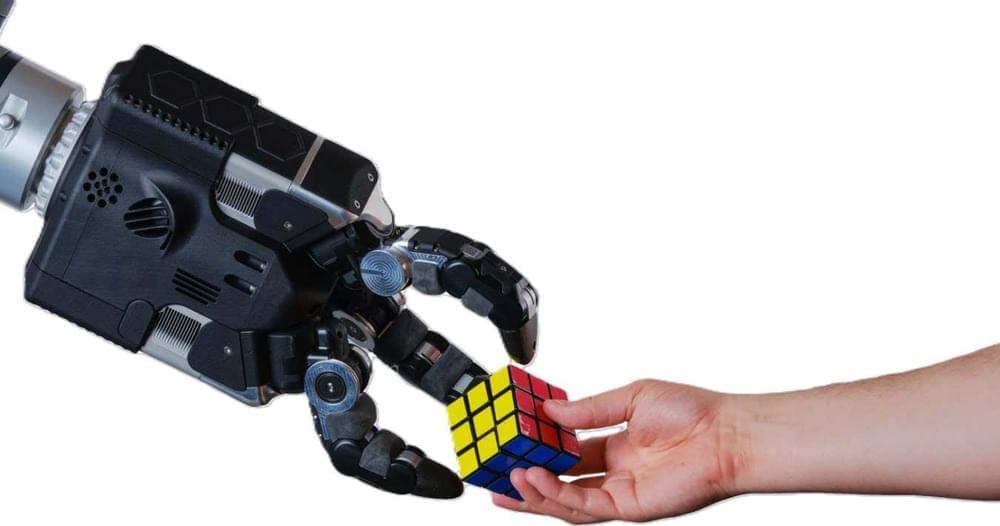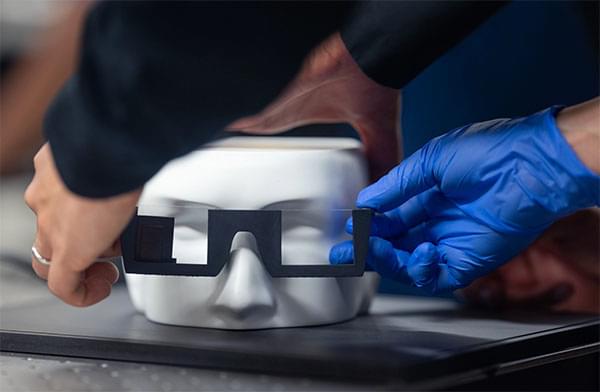The evidence that the Universe is expanding is overwhelming. But how? By stretching the existing space, or by creating new space itself?



In the 1880s Heinrich Hertz discovered that a spark jumping between two pieces of metal emits a flash of light – rapidly oscillating electromagnetic waves – which can be picked up by an antenna. To honour his groundbreaking work, the unit of frequency was named “Hertz” in 1930. Hertz’s findings were later used by Guglielmo Marconi (Nobel Prize in Physics, 1909) to transmit information over long distances creating radiocommunication and revolutionizing wireless telegraphy – shaping the modern world until today.
Scientists from the Department of Physics and the Regensburg Center for Ultrafast Nanoscopy (RUN), University of Regensburg, have now been able to directly observe a quantum version of Hertz’s spark jumping between just two atoms by measuring the oscillogram of the light it emits with temporal precision faster than a single oscillation cycle of the lightwave. This new signal enabled achieving a long-sought goal: atomic spatial resolution in all-optical microscopy.
As an unprecedented communication channel with the quantum world, this signal could be crucial for the development of super-fast quantum technologies as it gives new insights into the processes happening on lengthscales of single atoms and timescales faster than a trillionth of a second.

The paper is published in the journal Physical Review X.
In the world of quantum computing and quantum simulation technology, there is a fundamental challenge when using neutral atoms: The lifetime of Rydberg atoms, which are the building blocks for quantum computing, is limited. But there is a promising solution: circular Rydberg states.
For the first time, the research team has succeeded in generating and capturing circular Rydberg atoms of an alkaline-earth metal in an array of optical tweezers.

News: Skin injuries can modify the gut microbiome, according to a NIAMSfunded study led by UC San Diego.
Read the OpenAccess paper via Nature Portfolio.
The microbial community in the intestine can affect other organs such as the skin but it is not clear if the opposite can occur. Here the authors show that skin wounding affects the microbial composition of the intestinal flora which then enhances DSS induced colitis and intestinal inflammation.


The very lowest frequencies of the radio Universe have just been revealed in spectacular clarity.
A team of astronomers has used a new calibration technique to give us the first sharp images of the radio Universe in the frequency range of 16–30 megahertz – an achievement previously thought impossible, due to the turbulent interference generated by Earth’s ionosphere.
“It’s like putting on a pair of glasses for the first time and no longer seeing blurred,” says astronomer Christian Groeneveld of Leiden University in the Netherlands, who led the research.

A new robotic hand can withstand being smashed by pistons or walloped with a hammer. It was designed to survive the trial-and-error interactions required to train AI robots.
By Jeremy Hsu

Researchers in the emerging field of spatial computing have developed a prototype augmented reality headset that uses holographic imaging to overlay full-color, 3D moving images on the lenses of what would appear to be an ordinary pair of glasses. Unlike the bulky headsets of present-day augmented reality systems, the new approach delivers a visually satisfying 3D viewing experience in a compact, comfortable, and attractive form factor suitable for all-day wear.
“Our headset appears to the outside world just like an everyday pair of glasses, but what the wearer sees through the lenses is an enriched world overlaid with vibrant, full-color 3D computed imagery,” said Gordon Wetzstein, an associate professor of electrical engineering and an expert in the fast-emerging field of spatial computing.
Wetzstein and a team of engineers introduce their device in a new paper in the journal Nature (“Full-colour 3D holographic augmented-reality displays with metasurface waveguides”).

